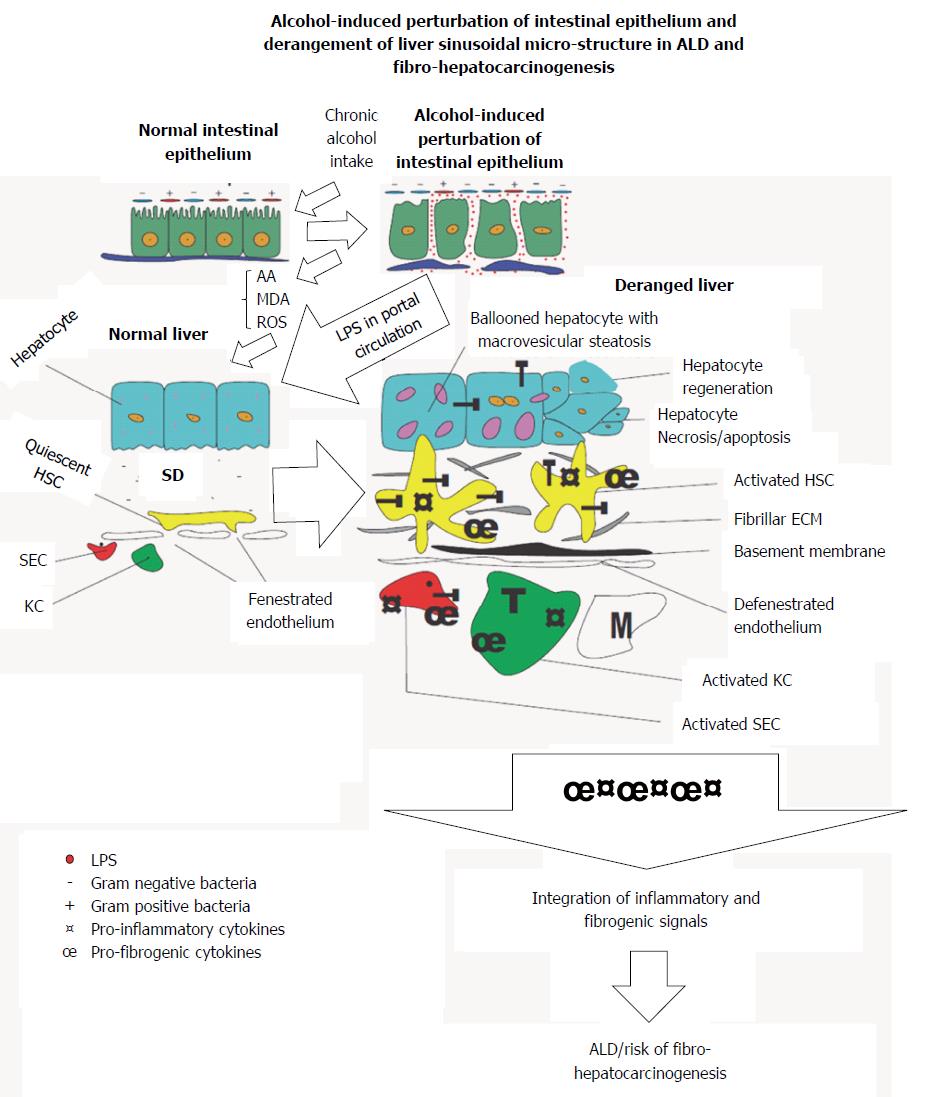Copyright
©The Author(s) 2016.
World J Gastroenterol. Jan 7, 2016; 22(1): 50-71
Published online Jan 7, 2016. doi: 10.3748/wjg.v22.i1.50
Published online Jan 7, 2016. doi: 10.3748/wjg.v22.i1.50
Figure 1 An illustration of the bidirectional origin of alcoholic liver disease and fibro-hepatocarcinogenesis within the gut-liver axis.
Chronic alcohol use induces derangement of the gut epithelium, increases Gram-/Gram+ bacteria ratio, increases endotoxin turnover, increases permeability of gut epithelium to endotoxins including lipopolysaccharide (LPS). Subsequently leakage of LPS into portal circulation gain access to liver to initiate activation of hepatic cells. LPS-dependent activation of hepatic cells is further augmented by metabolic derivatives of alcohol to promote alcoholic liver disease (ALD) and fibro-hepatocarcinogenesis. T: Toll-like receptor 4; HSC: Hepatic stellate cell; KC: Kupffer cell; SD: Space of disse; SEC: Sinusoidal endothelial cell; M: Monocyte.
- Citation: Boye A, Zou YH, Yang Y. Metabolic derivatives of alcohol and the molecular culprits of fibro-hepatocarcinogenesis: Allies or enemies? World J Gastroenterol 2016; 22(1): 50-71
- URL: https://www.wjgnet.com/1007-9327/full/v22/i1/50.htm
- DOI: https://dx.doi.org/10.3748/wjg.v22.i1.50









